There’s an expectation that the smaller a car is, the cheaper it ought to be.
This is no waterproof assumption, of course, as nobody expects an Alpine A110 – a tiny coupe that’s towered over by the related Renault Megane RS Trophy from $54K – to cost less. It’s actually twice the price. And why not? The former is a bespoke low-slung sports car with Porsche Cayman capability levels so obviously can’t come cheap.
But what about two technologically similar models that share the same basic ingredients, like the Toyota Yaris B-segment and Toyota Corolla C-segment hatchbacks? The first one starts at $22,130 (before on-road costs) and the second is $23,895 before ORC, meaning it’s only seven per cent cheaper.
And it that isn’t challenging enough, as Toyota’s cheapest passenger car, the entry-level Ascent Sport breached the $20K barrier by over 10 per cent when the all-new fourth-generation version arrived last year, taking a flying leap of almost $7000 over the preceding $15,390 equivalent; that cost 36 per cent less than the base Corolla.
Hence, we’re taking a long, hard look at the new least-expensive Yaris, to see if it’s at least 29 per cent better than before.
Toyota Yaris 2021: Ascent Sport
| Engine Type | Inline 3, 1.5L |
|---|---|
| Fuel Type | Unleaded Petrol |
| Fuel Efficiency | 4.9L/100km (combined) |
| Seating | 5 |
| Price From | $17,600 - $22,330 |
| Safety Rating |
|
Does it represent good value for the price? What features does it come with?
Our Yaris Ascent Sport 1.5-litre three-cylinder manual five-door hatchback includes lurid lime paint for $500 extra, taking the as-tested price to $22,630 before ORC or $26,431 driveway ex-Melbourne.
Think that's the most expensive cheap Toyota in history? Think again. The 1999 Echo with three and not five doors and no power steering, air-conditioning and advanced safety gear like anti-lock brakes (let alone AEB autonomous emergency braking and stability control) cost $15,000 back then but nearly $25,500 before ORC in today’s money.
This puts the 2021 equivalent in perspective.
Instead of just one airbag it has eight, including centre airbags to help stop the front-seat occupants from crushing each other in lateral collisions. Then there's AEB with pedestrian (day/night) and cyclist (day) detection, daytime intersection assistance, emergency steering assist, adaptive cruise control (but not full stop/go in the manual versions), lane-keep assist, speed-sign recognition, auto high beam, anti-lock brakes with brake assist, traction control, stability control, active cornering assist, secondary collision braking, reverse camera and rear outboard-seating ISOFIX child restraint anchors.
Most of this stuff wouldn't be found in a Lexus LS400 in '99. And that cost over a quarter of a million in 2021 dollars.
Don't forget, too, that a 7.0-inch touchscreen, digital radio, Bluetooth connectivity and Apple CarPlay/Android Auto compatibility are also included, but no wireless smartphone charger and just a single-USB and 12-volt power sockets. Disappointing in an all-new car.
.jpg)
But there’s six-speaker audio, voice-recognition technology, trip computer, single-zone air-con, power windows, tilt/telescopic steering wheel adjustment, auto-retractable mirrors, a dual-level cargo floor, 15-inch steel wheels and a temporary spare. Adding premium paint costs $500 and two-tone paint is $450.
.jpg)
Toyota reckons the Yaris is the safest car in its class in the world, but with "Intelligent Clearance Sonar" with parking support braking (to stop you backing into things) and blind-spot monitor (BSM), you’ll need another $7970 for the ZR (bypassing the mid-range SX with its LED headlights, keyless entry/go, sat-nav and alloy wheels from $27,020) for that, while also gaining sportier trim, bolstered front seats, a head-up display and 16-inch alloys. The latter two grades also come with a $2000 hybrid option, but not the base hatch.
The least expensive 2021 Yaris, then, is undoubtedly well-equipped – especially considering the standard driver-assist systems that are included – but while cheaper rivals are few, they’re fierce.
The Suzuki Swift GL Navigator manual is over $3000 cheaper from $18,990 before ORC/$20,990-driveaway and adds GPS, 16-inch alloys and an extra cylinder (though smaller engine). But you’ll need to stretch to the auto-only GL Navigator Plus from a still-highly competitive $21,490/$23,490-driveaway to enjoy AEB, lane-departure assist and auto high beams, as well as heated side mirrors, BSM, rear cross-traffic alert (RCTA) and rear parking sensors. Adaptive cruise isn’t available in either Swift grade.
The Mazda2 G15 Pure, meanwhile, from $20,990 before ORC/$22,990-driveaway also lacks the latter but matches the Swift GL Navigator Plus for spec otherwise – minus the GPS.
Leaving Japan, the Volkswagen Polo from South Africa and with its terrific 1.0-litre three-pot turbo manual is keenly priced from $19,290 before ORC/$20,490-driveaway (70TSI Trendline), but even the mid-spec and more powerful $20,890/$22,990-driveaway 85TSI Comfortline undercuts the Yaris Ascent Sport, but doesn’t include BSM, RCTA, adaptive cruise or auto high beams – though they are at least offered as part of a cost-option Driver Assistance package.
Australia’s bestselling supermini in 2020 – the pretty little MG3 from China – is a sensational $16,690-driveaway (there’s your reason why), but most driver-assist safety tech including AEB is AWOL, rating just three stars in the crash-test ratings compared to the others’ five. And it's facing a 10th birthday.
No rival can equal the Toyota’s airbags-between-the-front-seats innovation.
Verdict? The base Yaris is expensive but well-specified on a features-for-dollars basis compared to the best of the competition. Let's see how the rest of it fares.
Is there anything interesting about its design?
On one hand, the stripped-down Ascent Sport is perhaps the most pleasant of the (non-GR Gazoo Racing turbo AWD) Yaris grades in terms of aesthetics, its plainness suiting the busy and bulbous lines in allowing them to be beheld unfettered by extraneous baubles.
However, even fans of hubcaps like your author must admit that they make the cheapest version look like an unloved rental. After a strong start with the Starlet (1996), the subsequent Echo and Yaris wheel trims have been very hit-and-miss.
.jpg)
There’s much to admire elsewhere, thankfully.
Like in the hatchback body’s proportions, thanks to a 40mm longer wheelbase, 5mm lower roof and 45mm shorter overhangs compared to the previous car. Even with our version’s continuing Japanese Domestic Market-issue 1695mm width (Euro models are 50mm broader) and skinny 185/60R15 rubber, the resulting stance possesses some attitude, backed up by a mean-looking face and an edgy tail-light flourish that gives the Toyota a flash of personality.
.jpg)
That 12 colours are offered including retina-searing lime, purple, pearl, pink, electric blue and bronze is another bonus in this day and age of endless shades of grey.
One last thing. The previous XP130 Yaris was infamous for having a single windscreen wiper. Toyota has addressed this with the bi-wipered XP210.
How practical is the space inside?
Here’s another area where the base Yaris feels grown-up. No, it isn’t avant-garde like the ’99 XP10 Echo and ’05 XP90 follow-up, nor as serious as the sober last one, but a solid and sophisticated take on Toyota’s latest interior packaging and styling themes.
Larger and taller than you might expect a supermini to be, it’s an easy-access, spacious and obviously very well-screwed together cabin that doesn’t feel cheap (which of course, it no longer isn’t) when you take a closer and harder look at it.
.jpg)
Bottom tier giveaways include a plastic (though still pleasant to grasp) steering wheel, manual air conditioning and dearth of brightwork, resulting in an interior awash with monochromatic but also subtly textured black plastic, contrasted with splashes of glossy piano-black inserts. As such, it’s a bit like Yaris in a grey-flannel suit. Timeless and classy.
Speaking of which, the twin-canister digital instrument layout of the SX and ZR are sidestepped for an elegant analogue binnacle. And if you’re familiar with the previous Volkswagen Polo’s fascia, you’ll immediately recognise the look and layout of the two big analogue dials (tacho and speedo, naturally), flanking an LCD screen that – among other info – gives road speed, fuel consumption, driver-assist safety, signed traffic speed, audio, trip computer and vehicle function data. Just like in the exxier grades.
.jpg)
Otherwise, it’s just like the mid-grade Yaris SX hybrid tested earlier in the month, which means similarly smart upholstery patterns on flat but supportive outboard seats, tons of storage (including massive front door pockets) and excellent ventilation that easily reaches the rear seat area.
If you dig box ticking, you’ll appreciate that the Ascent Sport isn’t all that base. Beyond the expected telescopic as well as tilt-adjustable steering, a driver’s seat cushion-height lifter, Bluetooth audio streaming and telephony, Apple CarPlay/Android Auto, digital radio, remote central locking and a single USB-A outlet up front, you’ll find adaptive cruise control, the auto up/down function for all windows (that drop out of sight for rear-sited pets to stick their heads out of), illuminated vanity mirror and USB-actuated video playback on that biggish touchscreen. And we’re very glad to see a regular manual handbrake too.
.jpg)
Plus, the back row is comfier and roomier than we remember in any previous Toyota supermini, highlighting just how space-efficient this generation is. Thanks, big wheelbase stretch! Feet can be tucked un under the front seats. Shoulder room is fine for two adults, there’s ample head space and your knees aren’t forced into an unnatural and uncomfortable high-up position, that leads to achy buttock syndrome.
.jpg)
That’s not to say this interior is perfect. Out back there are coat hooks and rear small-bottle receptacles as well as one reading light and map pocket but no USB/12V charging options or overhead grab handles, and just a single cupholder located behind the front console, so be prepared to fight your fellow passenger for that one.
Further back, the cargo area is defined by its large tailgate opening and deep, flat load area, with a fake floor to hid stuff under. Clever. A space saver spare is located underneath. Of course, the Ascent Sport features a 60/40 split-fold rear seat, extending the standard cargo capacity of 270L (VDA).
Overall, then, the cheapest Yaris’ cabin is far-more contemporary, much better equipped and way roomier, quieter, comfier and sturdier than any previous Toyota supermini. In other words, we reckon it’s worth the extra outlay when you also factor in the added safety and convenience features.
Another way of looking at it is this: the Ascent Sport is comparable packaging-wise to a Corolla hatch from a dozen years ago or so. And that cost more when new. We’re starting to think that all this expectation management might have been avoided with a name change…
What are the key stats for the engine and transmission?
All Yaris models are powered by an efficient and lightweight three-cylinder petrol engine, so no-more fours.
Some have hybrids. One has more capacity and a giant turbo, but the Ascent Sport’s is a 1490cc 1.5-litre naturally-aspirated, direct-injection, double overhead cam, 12-valve unit with dual variable-valve timing.
It delivers 88kW of power at a heady 6600rpm (but will rev to almost 7000rpm) and 145Nm of torque from 4800-5200rpm.
.jpg)
Ours drives the front wheels via a six-speed manual – a slick and satisfying shifter that makes the most of the rorty three-pot engine it’s attached to. The vast majority of buyers, of course, will pay the extra $1500 for the continuously variable transmission (or CVT). As with many current Toyotas, it has a launch gear for a more natural auto gearbox feel, before seamlessly engaging the variable ratios.
But why deny yourself such a delightful manual gearbox?
How much fuel does it consume?
We averaged an impressive 5.3L/100km at the pump, just pipping the official 5.4L/100km claim. That translates to about 126g/km of carbon dioxide emissions, by the way. The official Extra-urban and Urban numbers are 4.5 and 7.0L/100km respectively.
Fitted with a 40-litre tank, over 740km between refills is possible.
Choosing the CVT should shave another 0.5L/100km, so that should be your choice if maximum efficiency (and ease) is your goal, but what price fun?
Meanwhile, the hybrid averages just 3.3L/100km (our $29,090 SX Hybrid at the pump returned a staggering 4.0L/100km).
The Ascent Sport is tuned to run on 91 RON unleaded petrol, but will happily drink the less-expensive 94 RON E10 ethanol/petrol mix.
Warranty & Safety Rating
What safety equipment is fitted? What safety rating?
Tested last year, ANCAP has awarded the Yaris a full five-star crash-test rating. No surprise, given Toyota’s claims of this being the safest supermini in its class.
Some of that has to do with its segment-redefining airbag spec. Along with dual-front, side and curtain items, there’s also centre airbags to help stop the front-seat occupants from smashing into each other in lateral collisions.
Buyers of even this base Yaris will enjoy the security of AEB, which works from 10km/h to 180km/h while the lane support systems operate between 50km/h and 180km/h. It includes pedestrian (day/night), cyclist (day) and object back-over detection.
Other safety items include daytime intersection assistance, emergency steering assist, adaptive cruise control (but not full stop/go in the manual versions), lane-keep assist, speed-sign recognition, active cornering assist, secondary collision braking, auto high beam, Hill Start Assist control, Electronic Stability Control, traction control, anti-lock brakes with electronic brake-force distribution and brake-assist, rear camera with guide lines, rear parking sensors, reverse camera and rear outboard-seating ISOFIX child restraint anchors as well as three top tethers for straps.
As we said earlier, for BSM you'll need to step right up to the Yaris ZR from $30,100. A big jump.
What does it cost to own? What warranty is offered?
Toyota makes it easy and keeps it simple.
It offers a five-year/unlimited kilometre warranty – with the option of extending that to seven years – as well as roadside assistance. Service intervals are at 12 months or 15,000km.
Clearly outlined online, the first four scheduled services are capped at $195 each, with the work carried out detailed online. This is one of Toyota's biggest advantages over the competition.
What's it like to drive around town?
As with the Yaris hybrid and Yaris Cross hybrid models we’ve tested lately, the Ascent Sport was born to be a city car. Thus, from this perspective, faulting or criticising it is a matter of clutching at flimsy straws.
Why? Easy to get in and see out of, the Toyota benefits from a spacious and inviting cabin. Its switchgear is simple to understand and light to use, the turning circle is pleasingly small in tight situations for effortless manoeuvrability and there’s a reassuring measured flow to how all the major controls like the gear shift, clutch, brakes and throttle work. Nothing feels heavy or laboured.
If you’re an owner of a 1996 Starlet, 1999 Echo or either one of the previous two-generation Yaris models, these observations should come as no surprise at all. It’s how Toyota builds its superminis. Has done so since the 1961 Publica.
But let’s make one thing very, very clear. The 2021 Yaris is a huge step forward from these older models for one simple reason: the all-new powertrain behind that mouthy grille and re-engineered architecture underneath are world-class, raising the standard of performance, handling, ride comfort, refinement and security to levels which bother the best from Europe and Japan.
Consider the performance. Yes, the 1.5-litre is thrummy and a little odd – some might even say cheap – sounding. But it also offers a terrific blend of punchy off-the-line acceleration for instant throttle response that’s satisfying and handy zipping through traffic, and – as we pointed out earlier – excellent real-world fuel economy.
But there’s more. Strong and sustained open-road power delivery is another side to the M15A-FKS engine's character, with an ability to power on ahead all the way to the red line, at speeds well into three figures, while pulling lustily and heartily. It’s a rare joy nowadays to row a smooth and sweet-shifting six-speed shifter through each gear, feeling the natural torquey thrust whip you along at quite the rate of knots. All from just three cylinders. Remarkable.
Then there’s the chassis. The Yaris’ steering isn’t the last word in feel and feedback – there just isn’t the interactive connection you’ll find from a Ford Fiesta or Suzuki Swift’s helm – but it is measured and direct enough for even driving enthusiasts to sink their teeth into. Cornering hard and fast is fun and easy, with a poise and confidence that’s undeterred by mid-turn bumps or uneven road surfaces. Even on narrow eco-focused tyres that are prone to squealing when chucked around, the Ascent Sport goes precisely where you want it to, hugs the tarmac and behaves with infectious confidence. And though the rear brakes are drums, it hauls up instantly too.
Are we really talking about a Yaris here?
We’re equally enthusiastic about the suspension’s ability to absorb bumps big and small, without transmitted them inside – a bugbear of the old model, which also handled well but wasn’t nearly as smooth or composed on anything other than super-smooth bitumen. The latest version caps off an impressive dynamic display by being quieter and thus far-more civilised inside.
If we had to put a dollar value on how far the Yaris has come, we’d say that it would easily eclipse the price differences. Yep, you get what you pay for and more with the 2021 Ascent Sport - a supermini that unexpectedly lives up to its suffix.
Who'd have thunk that?
Verdict
There’s no getting away from the fact that the box-fresh Yaris Ascent Sport’s circa-$7000 price hike will shut out thousands of Australians from new-Toyota ownership, denying them the reassuring reliability, durability, ease and low-cost experiences that have made it number one.
On the other hand, the newcomer feels like it has leapt generations ahead of its patchy predecessor, costing more but consuming less, feeling less fatiguing, surrounding you in leading safety and providing substantially stronger performance paired with greater athleticism – whether in urban or rural environments.
So different is the 2021 Yaris that Toyota ought to have changed the name. Perhaps back to Echo, Starlet or even Publica, but something bold and fresh to match its character and distance it from the tired old fleet-fodder cheapie which found a massive audience purely on the reputation of the brand.
In this light, the Ascent Sport represents compelling value, and deserves to be cross-shopped against the leading VW Polo and Suzuki Swift competition.
Sticker shock and awe sums it up.
Pricing Guides







.jpg)

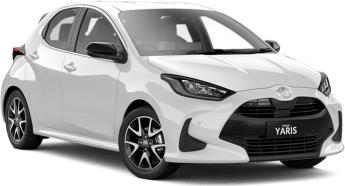
.jpg)
.jpg)
.jpg)
.jpg)
.jpg)
.jpg)

.jpg)

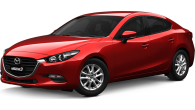

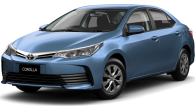
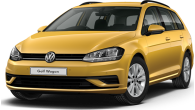








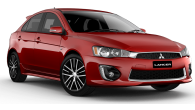




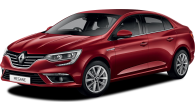
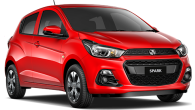
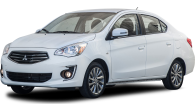






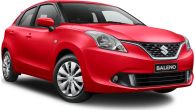





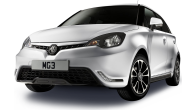

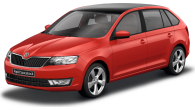
.jpg)

.jpg)



